The evolution of one of Sydney’s famed grocery stores into a global phenomenon has seen diversification that reaches across their store design as well as services. Owen Lynch inspects the menu.
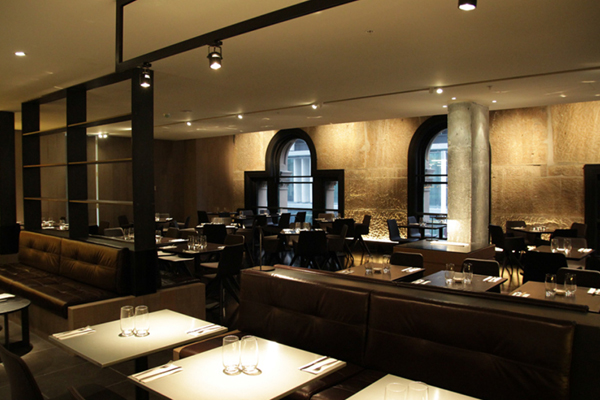
April 22nd, 2013
jones the grocer arrived, modishly, on the Sydney food scene in 1996. A smart addition to the leafy streets of Woollahra, an affluent suburb with a taste for the finer things, jones the grocer (JTG) promised the best of the best in imported and locally sourced groceries, complete with cheese room and an in-house, queues-out-the-door, café.
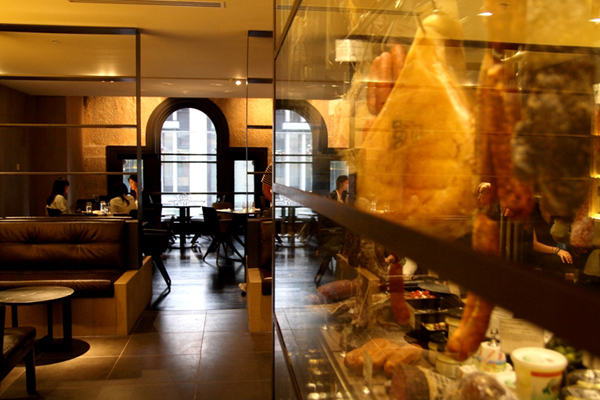
Flash forward sixteen years and though the branding remains relatively familiar to any loyal customer – the location, the business model and the scale of the venture are vastly changed. Now firmly established in the Middle East, New Zealand and Singapore with locations soon to open in China and a view to entering the UK and the US, this is an ambitious expansion by any measure.
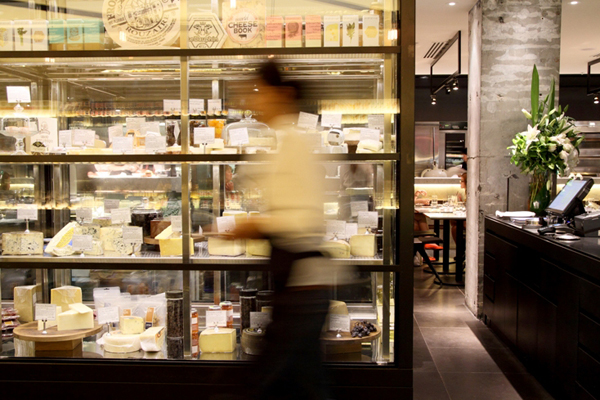
Eyeing the potential of the brand based on its successes in the Asian market, the LVMH Group entered into a strategic partnership with JTG’s director John Manos, ensuring the brands growth. Enter: Landini Associates.
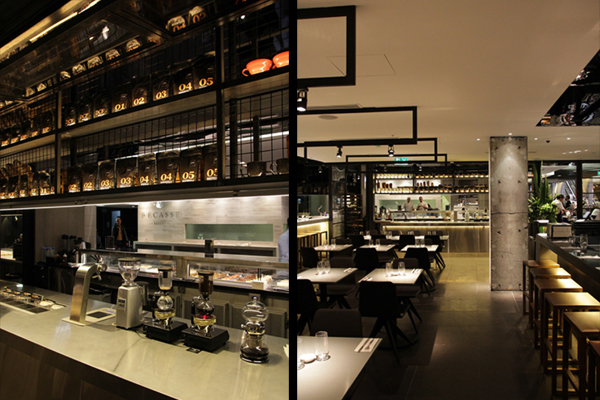
The task of reintroducing the brand to its hometown audience was entrusted to Mark Landini and his team – no strangers to retail design and strategy. A site in Sydney’s new Westfield complex (formally occupied by Bécasse restaurant) has become the new JTG flagship offering café, dining, onsite bakery, retail and an integrated grocery concession.
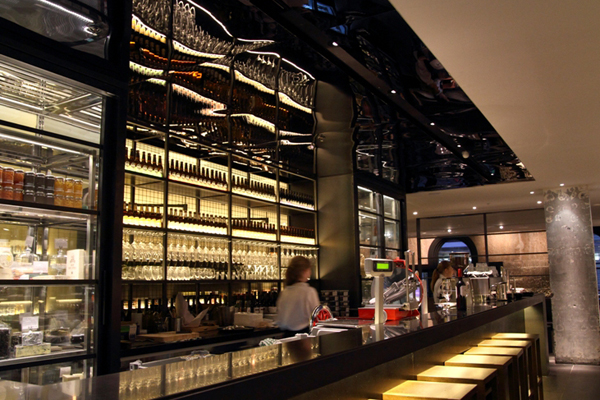
When pressed on the challenges faced in augmenting the customer’s perception of the brand to meet the new offering, Mark Landini explained that it was a matter of: “where ‘jones’ is taking their business now (rather) than where it has been.”
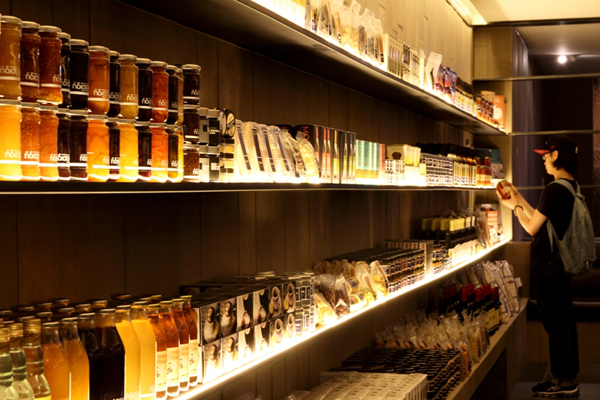
This forward thinking afforded Landini Associates a blank canvas of sorts, “It’s still a grocer but now its grown to be a creator of meals to eat in or take away, a baker and patisserie as well as a tea expert, cafe, licensed restaurant with private dining room, cooking school and tapas bar.” And achieving all this diversity of service in one location? “It was a tricky balance.”
One that called on the expert assistance of fellow hospitality experts, the lighting design team at PointofView, lead by Mark Elliott.
“Contrast was a defining factor, accent lighting to tables and task areas was applied, whilst circulation was incidentally lit, creating ambience. This encourages dining and drinking throughout the day into the night.” explains Elliott.
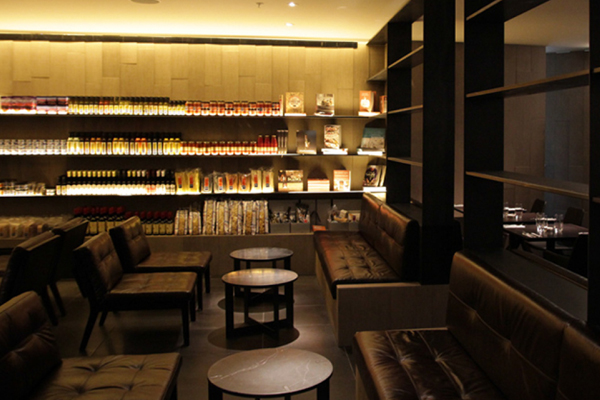

From a planning perspective, Landini explains how the placement of the open bakery and patisserie assist in providing an active interface with the Westfield guests, whilst also serving to buffer the dining and intimate areas from the shopping centre.
“We then created multiple areas internally, entertained and protected by food production activities such as the open kitchen, tapas bar and shop. This allows the whole to be viewed from the center but be separate enough to define its own personality.”
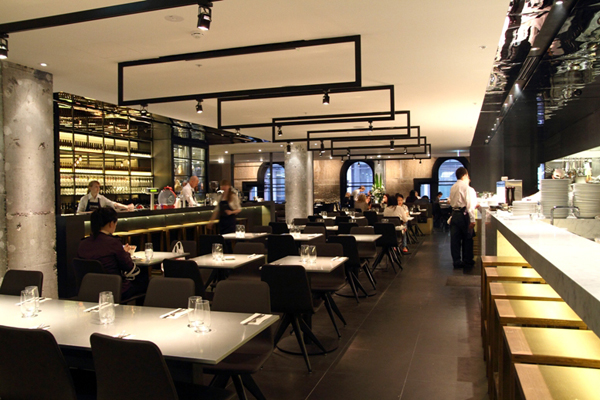
Aesthetically, JTG boasts a warmth that sits at odds with its Westfield Sydney home. This is thanks largely to a feature wall, the skin of the building that forms the Westfield façade onto Pitt Street Mall.
“The heritage wall at the back of the space was a critical element from day one,” explains Elliott, “It was important to create an illuminated back drop to the space to draw the eye through the front of the store and to enhance the beautiful texture of the stone.”
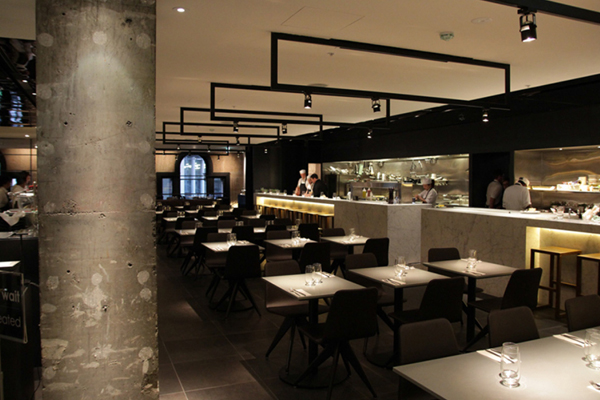
“At the very outset of the project we knew how important the lighting would be both as a foil to the centre but also to create the dining experience that Jones needed,” Adds Landini, “When food’s done well it is a celebration of real people coming together to cook, eat and be social. Jones gets that and that’s what makes this special.”
jones the grocer
Landini Associates
PointofView
INDESIGN is on instagram
Follow @indesignlive
A searchable and comprehensive guide for specifying leading products and their suppliers
Keep up to date with the latest and greatest from our industry BFF's!
The new range features slabs with warm, earthy palettes that lend a sense of organic luxury to every space.

London-based design duo Raw Edges have joined forces with Established & Sons and Tongue & Groove to introduce Wall to Wall – a hand-stained, “living collection” that transforms parquet flooring into a canvas of colour, pattern, and possibility.
GHD has signed up as the major tenant for the new commercial office tower to be constructed at 999 Hay Street in Perth, Australia.
FDC and industry friends are once again involved in this year’s Melbourne Cup Day fundraising event at Doltone House on Tuesday 1 November.
The internet never sleeps! Here's the stuff you might have missed

The new Heritage Loom Collection weaves past and present together to capture the spirit of iconic fabric construction
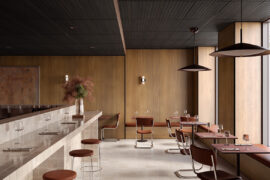
Australian designed and manufactured, Laminex Architectural Panels transform timber design aesthetics with cutting-edge technology